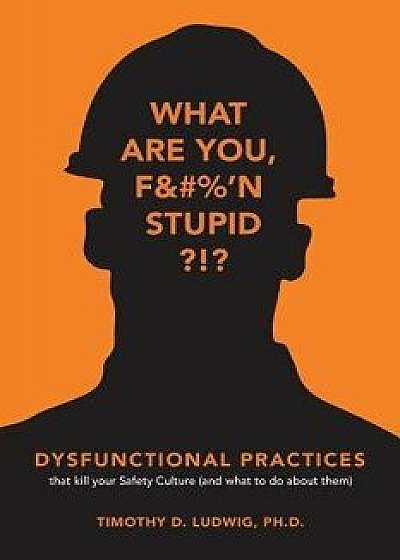
Dysfunctional Practices: That Kill Your Safety Culture (and What to Do about Them), Paperback/Timothy D. Ludwig Ph. D.
Descriere
(Alternate cover available. Choose "See all formats" and choose the April edition of the book) A MAN FINDS HIMSELF on the top step of a step ladder; a woman removes the guard to her machine; a worker is not wearing her safety glasses in the plant; a roustabout uses the wrong sized clamp instead of retrieving the right tool from the supply truck; a supervisor teaches a new worker to take short cuts; a mechanic climbs on top of the active machine to find the oil leak. Why do these folks do these things? Is it because they are stupid? One tendency is to blame workers for safety errors and label their personal failings as the cause of the error. Labeling does not solve problems that cause error and, frankly, it may all be an illusion of human perception leading us to false conclusions. Our human tendencies result in interactions that hurt the safety of our workers and the effectiveness of the systems we put in place to protect them. These tendencies build dysfunctional management practices that create fear associated with your safety programs. I want to teach you a better way to analyze the behaviors of your employees to understand why they were put in a position to take the risk in the first place. Your system may be perfectly designed to promote risks and create safety traps. By analyzing the context of behavior we can discover ways to change your system to optimize safe behavior and reduce injury. This book presents new ideas and methods using stories we can all relate to. Human behavior is at the crux of your safety program. Physics and chemistry create hazards ready to be released when things go wrong. Human behavior happens right before that release. Therefore, we look at the behavior associated with the resulting injury and blame the person as the root cause. We label the person "stupid" and feel we have solved the problem. We haven't. Instead, a dysfunctional practice creeps into our safety management system blinding us from finding the true root causes of at-ri





